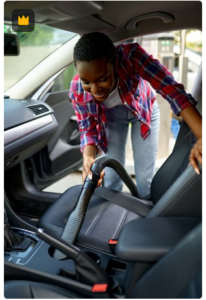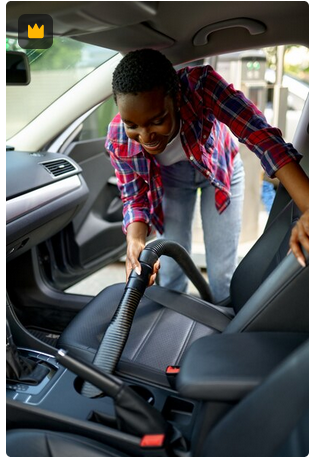Driving is an essential skill that provides independence, convenience, and freedom to individuals. However, being a responsible and skilled driver requires more than just obtaining a driver’s license. It is crucial to continuously work on improving driving skills to ensure safety on the roads and maximize the driving experience. Whether you are a novice driver or someone with years of experience behind the wheel, there are always ways to enhance your driving skills.
In this article, we will explore a variety of techniques and strategies that can help you become a better and safer driver.
1. Stay Updated with Traffic Laws and Regulations:
Keeping abreast of the latest traffic laws and regulations is crucial for improving your driving skills. Traffic laws can change over time, so it’s essential to stay informed about any updates. Familiarize yourself with local traffic regulations, including speed limits, right-of-way rules, and parking restrictions. Understanding and adhering to these laws will not only help you avoid fines but also contribute to safer driving habits.
2. Take Defensive Driving Courses:
Enrolling in a defensive driving course is an excellent way to enhance your driving skills. These courses provide valuable insights into defensive driving techniques, hazard awareness, and accident prevention. They often include both classroom instruction and practical driving exercises. Defensive driving courses can help you develop a proactive mindset on the road and equip you with the necessary skills to anticipate and react to potential dangers.
3. Practice Situational Awareness:
Maintaining situational awareness is crucial for safe driving. Always be alert and observant of your surroundings, including other vehicles, pedestrians, and road conditions. Avoid distractions such as mobile phones or loud music that can compromise your ability to concentrate on the road. By staying aware of what’s happening around you, you can anticipate potential hazards and take appropriate actions in advance.
4. Master Vehicle Handling Skills:
Understanding the capabilities and limitations of your vehicle is essential for safe driving. Take the time to familiarize yourself with the various controls, such as steering, acceleration, and braking. Practice maneuvering your vehicle in different situations, including parking, merging, and lane changes. Knowing how to handle your vehicle effectively will enable you to respond quickly and confidently in challenging driving scenarios.
5. Avoid Aggressive Driving Behaviors:
Aggressive driving behaviors, such as excessive speeding, tailgating, and erratic lane changes, not only endanger yourself but also put others at risk. Cultivate patience and practice courteous driving habits. Maintain a safe following distance from the vehicle ahead, use turn signals appropriately, and yield when necessary. By adopting a calm and considerate approach, you contribute to a safer driving environment for everyone.
6. Develop Hazard Perception Skills:
Being able to identify and respond to potential hazards is a critical skill for any driver. Improve your hazard perception skills by scanning the road ahead and anticipating possible dangers. Watch for pedestrians, cyclists, and other vulnerable road users. Be mindful of blind spots and use your mirrors effectively. The more adept you become at recognizing potential hazards, the more time you will have to react appropriately.
7. Practice Defensive Lane Positioning:
Proper lane positioning can significantly impact your safety on the road. When driving on multi-lane roads, position your vehicle in a way that maximizes visibility and minimizes risks. Avoid lingering in other drivers’ blind spots and maintain a safe distance from vehicles on either side. By positioning yourself defensively, you enhance your ability to react to sudden changes in traffic conditions.
8. Improve Your Night Driving Skills:
Driving at night poses unique challenges due to reduced visibility. To enhance your night driving skills, ensure that your vehicle’s headlights, taillights, and indicators are clean and functioning correctly. Adjust your speed to the conditions and use your high beams judiciously. Be extra vigilant for pedestrians and animals that may be harder to spot in the dark. By taking these precautions and practicing safe habits, you can improve your confidence and skill in night driving.
9. Enhance Your Parking Skills:
Parking can be a daunting task for many drivers. To improve your parking skills, practice various parking maneuvers such as parallel parking, perpendicular parking, and angle parking. Find an empty parking lot or quiet street where you can practice without distractions. Pay attention to your vehicle’s position within the parking space, use your mirrors and rearview camera (if available) effectively, and practice smooth steering and braking. With regular practice, parking will become easier and more precise.
10. Maintain Proper Vehicle Maintenance:
Ensuring that your vehicle is in optimal condition is essential for safe and efficient driving. Follow the manufacturer’s recommended maintenance schedule and address any mechanical issues promptly. Regularly check the tire pressure, tread depth, and fluid levels of your vehicle. Faulty brakes, worn-out tires, or other mechanical issues can significantly compromise your safety on the road. By maintaining your vehicle properly, you reduce the risk of breakdowns and enhance overall driving performance.
11. Use Technology to Your Advantage:
Advancements in technology have introduced numerous tools and features that can assist in improving driving skills. Consider utilizing GPS navigation systems to plan your routes and stay updated on traffic conditions. Some vehicles are equipped with driver assistance systems such as adaptive cruise control, lane-keeping assist, and collision warning systems, which can help improve safety. However, it is crucial to remember that these technologies are aids, not replacements for attentive and responsible driving.
12. Practice in Different Weather Conditions:
Driving in adverse weather conditions requires additional skills and caution. Take the opportunity to practice driving in various weather scenarios such as rain, snow, fog, or strong winds. Familiarize yourself with the adjustments needed for different conditions, such as reducing speed, increasing following distance, and using appropriate lights. By gaining experience in different weather conditions, you will be better prepared to handle unexpected situations on the road.
13. Minimize Distractions:
Distracted driving is a leading cause of accidents. Avoid activities that divert your attention from the road, such as texting, talking on the phone, eating, or grooming. If you need to use your phone or GPS, pull over to a safe location. Keep conversations with passengers at a manageable level to maintain focus on the road. By eliminating distractions, you can react more effectively to potential hazards and make safer driving decisions.
14. Stay Calm in Stressful Situations:
Driving can sometimes be stressful, especially when faced with heavy traffic, aggressive drivers, or unexpected road conditions. It is important to remain calm and composed in such situations. Take deep breaths, avoid engaging in aggressive behavior, and focus on your own driving. Reacting impulsively or aggressively can escalate the situation and compromise your safety. Remember, your priority is to arrive safely at your destination.
15. Continuously Assess and Reflect on Your Driving:
Self-assessment is a crucial aspect of improving driving skills. Regularly evaluate your driving performance and identify areas that need improvement. Reflect on your experiences and learn from any mistakes or near-miss incidents. Consider seeking feedback from experienced drivers, taking note of their observations and suggestions. The willingness to learn and grow as a driver is fundamental to becoming safer and more proficient on the road.
Conclusion:
Improving your driving skills is an ongoing process that requires dedication and a commitment to safety. By staying updated with traffic laws, taking defensive driving courses, practicing situational awareness, and mastering vehicle handling skills, you can enhance your driving abilities. Avoiding aggressive driving behaviors, developing hazard perception skills, and improving your night driving and parking skills are essential components of becoming a better driver. Remember to maintain your vehicle properly, minimize distractions, and stay calm in stressful situations. By continuously assessing and reflecting on your driving,













+ There are no comments
Add yours